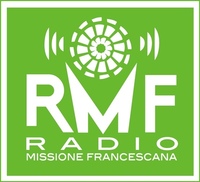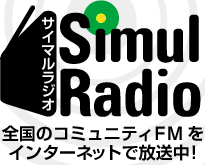In this section we discuss counterbalance looms, countermarch looms and jack looms.
Counterbalance Looms
The counterbalance loom type is found in nearly every country and is the traditional type of loom used around the world and throughout history. Pulleys and/or horses are used to hang shafts so that when at rest, the warp threads are neither pulled up nor down. When a shed is made, one or more shafts go up and the others go down. All of the shafts are responding to the weaver's foot, giving smooth, quick and quiet treadling. This gives the weaver control over the weaving sheds.
Since counterbalance looms have castles, they can have a heavier, hanging beater attached to the castle. This gives better control of the beat and a better view of the weaving as you beat.
Counterbalance looms commonly have from 2 to 10 shafts, but most weavers tie up only 4. If you want 3, 5 or more shafts, you need to tie them up differently. This is done after the warp is tensioned, and you will need to use extra pulleys or horses.
The counterbalance shed
Counterbalance looms allow one to open a small shed by using a light touch on the treadle, or a large shed by putting more pressure on the treadle. The pressure on the treadle regulates the size of the shed. Small sheds give much nicer selvages and result in less stress to the warp threads. A counterbalance loom can do this because the warp comes straight from the back to the front of the loom. When a shed is made, the tension on the warp threads is the same
on the top and bottom of the shed at all times. The counterbalance shed helps to weave pattern wefts without distortion and eliminates the altermating tight and loose tension of jack looms. The tighter tension on the bottom of the shed makes it easier to throw a shuttle and it is the reason that no shuttle race is necessary on a counterbalance loom.
An important advantage of the counterbalance loom is that all of the shafts are moved by each treadle. There are no shafts left to keep their place only by their weight, as with a jack loom. So, these shafts do not need to be heavy.
A clear shed can be made even on closely sett or sticky warps. The wefts can also be beaten in more securely because the warp travels straight from the breast beam to the back beam.
Counterbalance looms are very quiet. The quill moving in the shuttle often makes more noise than the loom.
Weaving Unbalanced sheds
On a counterbalanced loom that is more than three feet deep, unbalanced sheds will weave very well. On a shallow counterbalance loom, moving one shaft opposite three shafts will cause the one shaft to have a tighter tension on it's threads. If you change the height of the shafts, the tension will even out. All counterbalance looms have a way to adjust the height of the shafts. If the loom is a deeper loom the 3/1 sheds weave very well.
Countermarch Looms
This loom of Scandinavian and European design is becoming more available and more popular. It gives advantages of a counterbalance loom: quiet, smooth and light treadling on a tight tension. Shafts are tied independently, without a pulley connecting shafts to each other as with counterbalance tie ups. It is a good tie-up method if you want to weave with more than four shafts.
How the countermarch loom works
The countermarch frame sits on top of the loom, close to the front of the loom. It consists of two crossbeams which hold the wooden jacks. An extra set of lamms, which are as long as the weaving width of the loom, is placed under the original lamms. This second set of lamms gives you a complete tie-up of the shafts, so that each treadle moves all of the shafts. This complete tie-up gives you perfect sheds, easy treadling and more versatile weaving.
Countermarch Tie-ups
This second set of lamms provides the independent tie-up of the shafts. This gives you a tie from the lamms to the treadle for each shaft you are using. It is like tying up a jack loom and then tying up the resting shafts so they can be pulled down when a shed is made.
You start by tying up the treadles to the shafts just as with any other loom. Then you tie up the empty spaces on the treadles to the other set of lamms. This takes a few extra minutes to do, but the ease of weaving and ease of treadling more than make up for it. You must put a warp onto the loom before making your final tie-up of the lamms and treadles, as the light weight shafts need the warp threads in order to work. As with other looms, you can leave the treadles tied up when putting on a new warp. You don't need to change the treadle tie-up unless you will be adding or taking off shafts for the next warp, or if you are changing the treadle tie-up for a new weave.
It is possible to make a skeleton tie-up for weaves like summer and winter which may require more treadles than are available on your loom. You need to follow your pattern tie-up draft to do this.
Horizontal and Vertical countermarch
Horizontal countermarch looms have two jacks for each shaft and they sit horizontally in the frame at the top of the loom. Vertical countermarch looms have one jack for each shaft and they sit vertically in the center of the countermarch frame. Both types of countermarches are available and work very well. There is little difference in the weaving on a loom between the two types of countermarches. For the vertical countermarch the lower lamms are longer and extend outside of the loom frame. The cords for tying these lamms to the countermarch jacks, go on the outside of the loom. The horizontal countermarch tie up has these cords in the center of the loom. The horizontal countermarch is more common and is less expensive. Some drawlooms require the vertical countermarch. Some looms, like the 16 shaft looms only come with the horizontal countermarch.
Advantages of a Countermarch tie up
The countermarch loom gives you the advantages of a counterbalance loom, plus, you have independent tie up of the shafts.
The countermarch loom is a good choice for those who want more than 4 shafts.
Countermarch looms are often taller because of the need for two sets of lamms.
For more information about the two types of countermarches
To read tie-up instructions for a countermarch loom, visit: Loom Tie-up Instructions.
Jack Looms
Jack looms are chosen because they are portable, small and less expensive. Four shaft jack looms are easy for beginners to use.
How the jack loom works
The jack loom shafts work independently. The most common type of jack loom has shafts which are moved by jacks placed below the shafts. This eliminates the need for the castle frame above the loom. Table looms and small folding looms are usually jack looms for this reason.
This type of jack loom works by placing the shafts and the warp threads below the usual path of threads, which on other types of looms goes straight from the breast beam to the back beam. The lower position of the shafts on a jack loom is maintained by having the shafts heavy enough (2 to 6 lbs each) for their weight to resist the tension on the warp threads. The reliance on heavier shafts makes the treadling difficult. Weaving with a slightly looser tension helps to give a good shed, especially on a wide warp. Warp setts are often more open on jack looms. Weighted selvages will also help make up for the looser tension. Using a temple will help even more with these situations.
Characteristics of the jack system
Jack looms need shuttle races
When a shed is made the upper threads become tighter than the threads remaining on the bottom of the shed, especially on shallow looms. This looser tension on the bottom of the shed requires a shuttle race. A shuttle race is attached to the beater on a jack loom to support the shuttle as it passes over the warp threads. The shuttle race is necessary only because the tension on the warp is looser. Some looms allow you to remove the shuttle race.
Instead of having the warp threads in the center of the reed, they rest on the bottom of the reed. The beater is raised to give an even bottom shed and make the threads sit on the shuttle race. Some looms allow you to lower the beater for weaving more fragile threads.
This type of jack loom often has treadle springs. They are attached to help hold the treadles up, so that their weight will not hold the shafts up, creating shed problems.
Another type of jack loom has the shafts held high above the normal path of the warp. The shed is made by pulling shafts down, against a spring or other hanging mechanism. This type also has hard treadling, but it eliminates the need for a shuttle race, as the bottom of the shed is tight.
Treadle cords and sheds
It is important to have adjustable treadle cords so that you can make the shed the size you want. With unbalanced tie-ups, it is helpful to turn your tie-up if you frequently raise more than half of the shafts. It is easier to reverse the weave and lift fewer shafts as this makes the treadling easier.
Noise
Although looms with hanging shafts are more quiet, most jack looms have the jacks below the shafts. The noise results from the falling of the shafts to their bottom position, stopped by the loom frame. Most jack looms have metal heddles to add weight to the shafts and when the shafts fall to the jacks there is a metallic rattle.
Drawlooms
This type of loom is a two harness loom which greatly expands pattern capability. The first harness has 4, 5 or 6 shafts and they weave the ground weave. You only need 4, 5 or 6 treadles for weaving these shafts. The second harness of from one to many pattern shafts. The simplest is the single unit draw, giving images with no repeat. A shaft draw bridge has at least 10 pattern shafts which give repeat patterns.
The second harness is placed behind the first harness. The single unit draw has individually tied groups of warp threads and these cords are pulled to make the pattern. The shaft drawloom is set up to weave a fixed size of repeat, but can make an infinite number of patterns.
The single unit drawloom gives the most flexibility of design and is easier to thread, but takes more time to draw the cords while weaving. Its purpose is primarily designs with no repeats, but it can make repeats if desired. There are combination drawlooms which combine both the single unit and the shaft systems into one loom.
The heddles on the shafts of the first harness have long eyes of about 2 1/2". These shafts produce the ground weave. Traditionally this is plain weave, twill, broken twill or satin, since this is not the major design feature. If you have 4 or 6 shafts you can use a counterbalance tie up. If you have 5 shafts it is best to use a countermarch.
The second harness has very long heddles with normal eyes. When the weaver pulls the threads up by a handle or a cord, the threads rise to the top of the long eyes of the other heddles in the ground shafts. This can be understood if you are familiar with pick-up weaves. Designs are planned on graph paper. Each square represents a group of warp threads (4, 5 or 6), and an equal number of weft shots treadled in order. These groups of warp threads are pulled up according to the graph design.
Since the second harness is in the center of the loom, the loom needs to be about 2 feet deeper than usual. If you have a shaft drawloom the more shafts you use, the deeper the loom needs to be, up to 3 or 4 feet deeper. This is especially true for non stretchy warps.
One can use a drawloom to expand the number of blocks in a pattern weave such as summer and winter or crackle. The shaft type drawloom is used in this case.
Visit drawlooms for more information
litaniea
italiafilm on livestream.com. Broadcast Live Free
Followers
Friday, February 25, 2011
Subscribe to:
Post Comments (Atom)




.jpg)
























































































































%2B-%2BMarie%2BTherese%2BBloneldharau%2Bas%2BFlora.jpg)








.jpg)















































.jpg)





































































































No comments:
Post a Comment